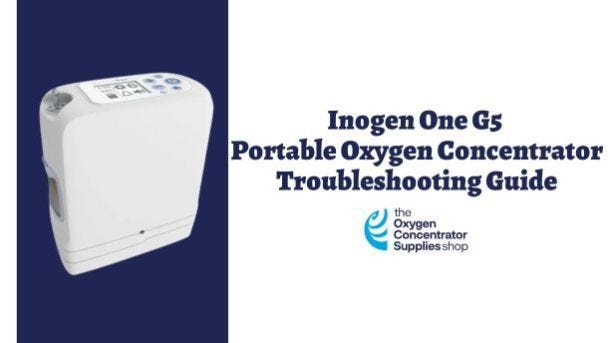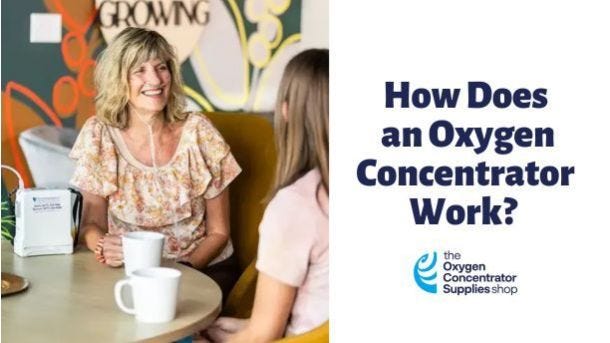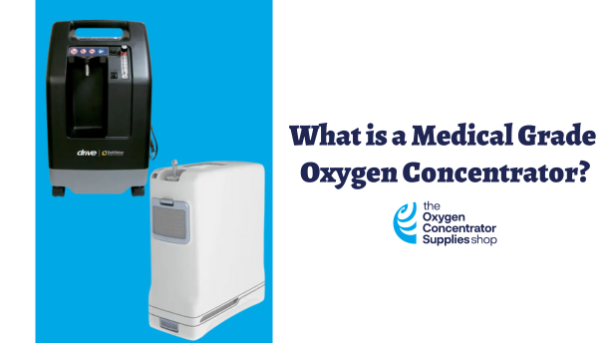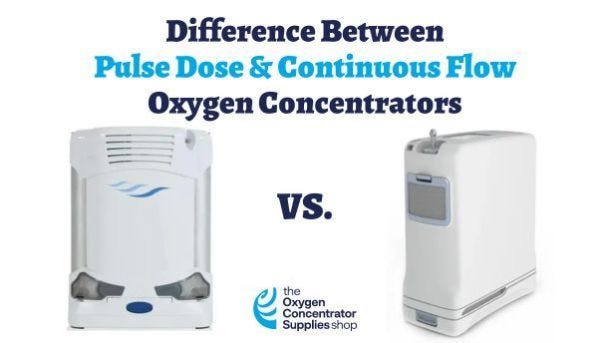Portable Oxygen Concentrators
Therapy on-the-go
Portable oxygen concentrators are devices used to provide supplemental oxygen to those who need it in a small and compact size. These devices are portable, lightweight, and FAA-approved, making them an ideal companion for those who are frequently on the go or travel. Portable oxygen concentrators can be plugged into an AC outlet at home, in a DC outlet in the car, or cord-free with a battery.
-
 May 7, 2025When you require a reliable supply of oxygen while away from home, you need a dependable portable oxygen concentrator. Fortunately, most portable oxygen concentrators offer long-lasting batteries for hours of oxygen delivery. If you’re planning a long road trip or are traveling internationally, here are some tips for selecting a portable oxygen concentrator that provides battery endurance duri...
May 7, 2025When you require a reliable supply of oxygen while away from home, you need a dependable portable oxygen concentrator. Fortunately, most portable oxygen concentrators offer long-lasting batteries for hours of oxygen delivery. If you’re planning a long road trip or are traveling internationally, here are some tips for selecting a portable oxygen concentrator that provides battery endurance duri... -
 March 26, 2025
March 26, 2025Caire SeQual Eclipse 5 Portable Oxygen Concentrator
The need for oxygen shouldn’t limit your active lifestyle. The Caire SeQual Eclipse 5 Portable Oxygen Concentrator provides a regular supply of oxygen for an active lifestyle. Key Features of SeQual Eclipse 5 Portable Oxygen Concentrator https://www.youtube.com/watch?v=4BCle4aXthQ The Caire SeQual Eclipse 5 features continuous flow settings from 0.5 LPM to 3.0 LPM and 9
-
 February 18, 2025
February 18, 2025Benefits of Buying Oxygen Concentrators Online
For those who require home oxygen therapy, purchasing an oxygen concentrator online is easier than ever. You no longer have to go to medical supply stores, schedule deliveries, or even make decisions based on whether or not your insurance is accepted. Online retailers, such as the Oxygen Concentrator Supplies Shop, simplify the buying process and providing customers with a positive experie... -
 January 20, 2025
January 20, 2025Inogen G5 Troubleshooting: A Comprehensive Guide
The Inogen One G5 portable oxygen concentrator gives patients who require oxygen therapy the freedom to live an active lifestyle without the restriction of home-bound oxygen equipment. The popularity of the One G5 has grown as it offers many of the features of stationary oxygen concentrators in a lighter, more compact unit.
-
 October 23, 2024
October 23, 2024How Does an Oxygen Concentrator Work?
Do you have low levels of oxygen in your blood due to respiratory problems, such as COPD, asthma, sleep apnea, cystic fibrosis, or lung disease? If so, your doctor may recommend the use of supplemental oxygen. In the past, your choices of oxygen devices were bulky tanks or cylinders that limited mobility and could even be dangerous. Fortunately, oxygen therapy technology has come a long way. T... -
 October 1, 2024
October 1, 2024Is It Legal To Drive A Car While On Oxygen?
Managing a respiratory illness shouldn’t mean being stuck at home with oxygen therapy. That’s why portable oxygen concentrators have become so popular. Oxygen therapy patients enjoy the freedom to go about their daily lives while receiving the oxygen they need. These freedoms include driving.
-
 September 23, 2024
September 23, 2024Oxygen Concentrator Safety Precaution Tips
When oxygen therapy is essential for your everyday health, then it is important to prepare when emergencies arise. Know what to do and how to maintain your oxygen concentrator best under difficult circumstances so you never have to go without oxygen therapy when you may need it most. Follow these important tips for maintaining your oxygen concentrator under emergency conditions.
-
 June 26, 2024
June 26, 2024What Is A Medical Grade Oxygen Concentrator?
Managing a respiratory illness requires due diligence on the part of patients. They may be expected to conduct tests at home that might be typically done in a doctor’s office. However, being part of the solution also empowers patients to maintain higher standards of care for themselves and stay alert of any health changes.
-
 April 30, 2024
April 30, 2024Oxygen Concentrator Troubleshooting
Although it may initially sound alarming and concerning, a beeping oxygen concentrator is no reason to panic. Most stationary and portable oxygen concentrators have several built-in safety features to alert users that something requires attention. Not only will your machine audibly beep, but most also have visual alarms as well in case the user is vision- or hearing-impaired. Most often, the concentrator either requires power or has detected poor airflow. Here are some reasons, and how to address the issues, of why your oxygen concentrator could be beeping. Use this checklist to help you figure the alarm out on your own.
-
 April 24, 2024
April 24, 2024Difference Between Pulse Dose & Continuous Flow Oxygen Concentrators
https://www.youtube.com/watch?v=PNDEYQdRH8o Patients with respiratory illness may require supplemental medical oxygen. When your physician writes a prescription, they will indicate the number of liters of oxygen delivered per minute (LPM) that you require. The LPM required will help determine whether a pulse dose or continuous flow oxygen concentrator best suits your needs. Here’s how the... -
 March 20, 2024
March 20, 2024Belluscura X-PLOR Portable Oxygen Concentrator Review
The Belluscura X-PLOR Portable Oxygen Concentrator is a lightweight and compact portable oxygen concentrator designed with ModulAir® and Airgonomical™ technology, ideal for oxygen therapy patients who want to replace their heavy oxygen units with something smaller but just as effective. This device includes a user-friendly interface to change/see settings easily, high oxygen outputs, and a rechargeable battery all at an affordable cost. With this portable oxygen concentrator, users will feel ready and able to participate in all the activities life has to offer.
-
 February 19, 2024
February 19, 2024Traveling with Portable Oxygen Concentrator to US National Parks
As the country begins to ease travel restrictions, folks are planning trips and vacations again. For patients who rely on portable oxygen therapy, this means ensuring proper travel preparations are made. For example, folks visiting US National Parks should consider a few things: elevation, available power sources, and operating temperature. Here is our list of things to consider when trave...


